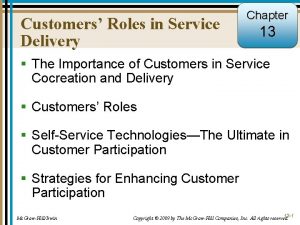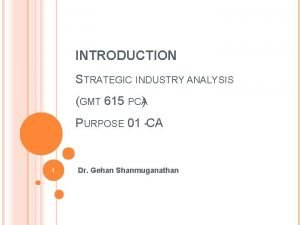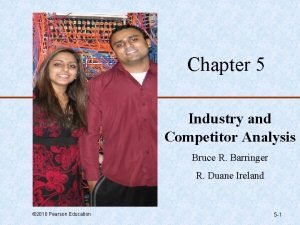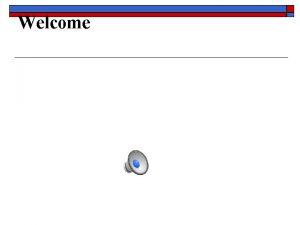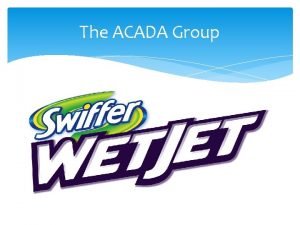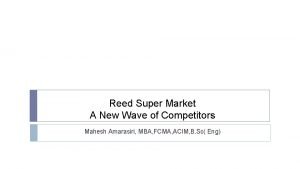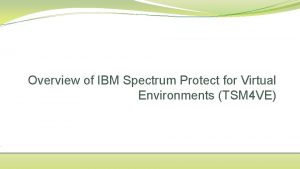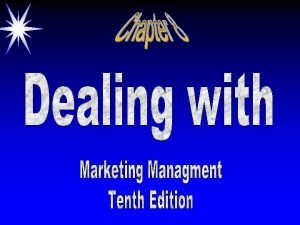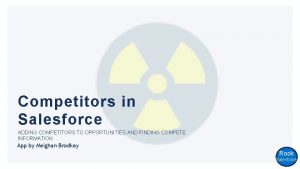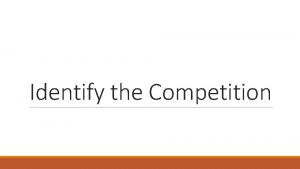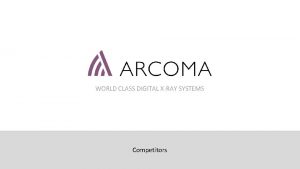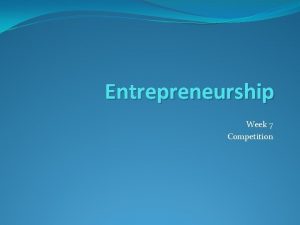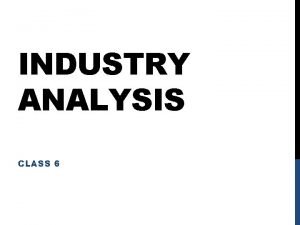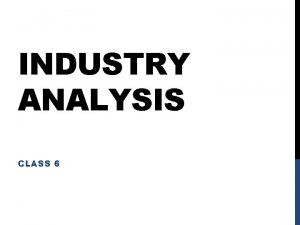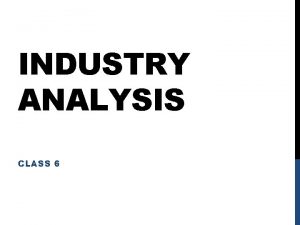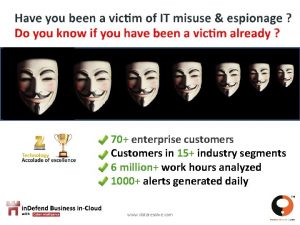UNIT 7 STRATEGIC ANALYSIS INDUSTRY COMPETITORS CUSTOMERS 1


















- Slides: 18

UNIT 7: STRATEGIC ANALYSIS: INDUSTRY, COMPETITORS, CUSTOMERS 1

INDUSTRY ANALYSIS Purpose • Match strategy to industry conditions • Identify opportunities and threats posed by the state of the industry • Industries differ in terms of characteristics and attractiveness. Understanding of industry attractiveness important. • Making entry/exit decisions 2

Key questions (Issues) • Degree of competition in the industry • Dominant economic features • Drivers of change in the industry • Key success factors in the industry 3

A. Competition in the industry • 1. 2. 3. 4. 5. • Industry competition depends on five basic forces: (Michael Porter, 1980) Threat of new entrants Rivalry within the industry Threat of substitute Bargaining power of Suppliers Bargaining power of buyers Collective strength of forces determines industry attractiveness 4

Value Creation Suppliers Industry R C Buyers R C Cost Accumulation 5

B. Industry dominant economic features • Industries differ in character and structure • Need to understand an industry’s dominant features. Such features include: - Market size and growth rate - Scope of competitive rivalry (Local, regional, national, international, global) 6

- Number of rivals (competitors) and their relative sizes - Number of buyers and their relative sizes - Extent of product differentiation - Extent of vertical integration - Distribution channels used 7

- resource requirements and ease of entry/exit - Any learning and experience effects - Industry profitability (attractiveness) - Capacity utilization – levels required to achieve production efficiency 8

c. Drivers of change in the Industry • How is the industry environment changing? • What are the driving forces for change in the industry? These include: - Changes in long term industry growth rate - Changes in who buys the product and how they use it - Product innovation - Technological change - Marketing innovation - Increasing globalization of industries - Government policy changes 9

D. Key success factors in the industry • Key success Factors (KSF)→The thing that most affects the ability of a company to succeed in the market place. • A company must develop competence on its industry’s key success factors if it has to remain successful • Key success factors are few in each industry • Key success factors vary across industries • Sound strategy incorporates efforts to be competent on all key industry success factors and to excel on at least one factor 10

Competitor Analysis • Identification of competitors (at least the major ones) • Strategies used by competitors • Performance of competitors Strategic moves competitors are likely to make 11

• Components of competitor analysis include: - Competitors’ future goals - Current strategy - Assumptions - Competitor capabilities 12

• Managers need to provide answers to the following questions: - Is the competitor satisfied with current position? - Any likely competitor strategy - Where is the competitor vulnerable? - What is likely to provoke competitor retaliations? 13

• Sources of competitor information include: - Published sources - Electronic media (advertising) - Sales people - Middlemen - Surveys by the company 14

MARKET ANALYSIS • The essence of any business is the Customers • Customer information important • Successful companies tend to be marketoriented • Strive to create value • See value through the eyes of the customer 15

- Maintain true customer focus - Customer is the focal point of all company activity - Customer is the starting point for company action - Everyone defines their job in terms of satisfying customers 16

• Question to be answered include: • Who are our customers • Where are they located? • Any changes in customers? 17

• What do customers see as important? • What are customer preferences? • Can the customers be segmented? • Any unserved segments? 18
 Roles of customers in service delivery
Roles of customers in service delivery Strategic industry analysis
Strategic industry analysis Strategy analysis and choice largely involves making
Strategy analysis and choice largely involves making Marks and spencer competitors analysis
Marks and spencer competitors analysis Under armour mission statement
Under armour mission statement Competitor analysis theory
Competitor analysis theory Louis vuitton target market
Louis vuitton target market Industry evolution and strategic change
Industry evolution and strategic change Strategic fit vs strategic intent
Strategic fit vs strategic intent Strategic substitutes example
Strategic substitutes example Strategic competitiveness
Strategic competitiveness Unit 10, unit 10 review tests, unit 10 general test
Unit 10, unit 10 review tests, unit 10 general test Indirect competitors
Indirect competitors Zappos competitors
Zappos competitors Aiba technical rules
Aiba technical rules Swiffer wet jet competitors
Swiffer wet jet competitors Competitors of starbucks
Competitors of starbucks Reed supermarkets: a new wave of competitors
Reed supermarkets: a new wave of competitors Ibm spectrum protect for virtual environments
Ibm spectrum protect for virtual environments
